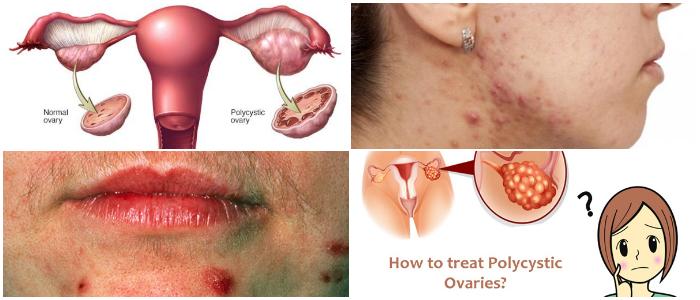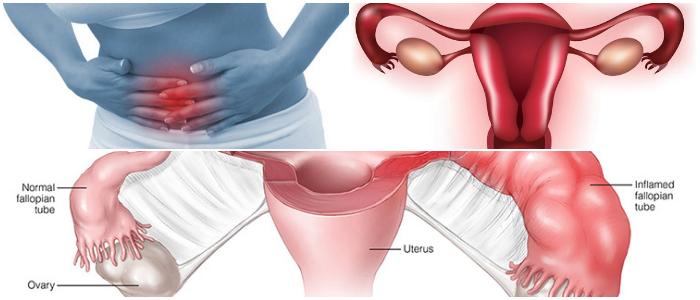Uterine diseases are conditions that affect the uterus (womb).
The uterus is an integral part of the female reproductive organ. It is where the baby develops when a woman is pregnant.
If you have a uterine disease, the first sign may be bleeding between menstruations and after sexual intercourse.
Such conditions can cause abnormal bleeding, hormonal imbalance, thyroid problems, fibroids, polyps, and cancer.
Treatment will depend on the cause. Sometimes birth control pills solve problems of hormonal imbalance.
If the cause is a thyroid problem, treatment can also help stop the bleeding. If you have cancer or hyperplasia, excessive growth of healthy cells in the uterus, you may need surgery.
Other uterine problems include endometriosis and adenomyosis.
In endometriosis, the type of tissue lining the uterus grows out of it. In adenomyosis, the tissue growths spread the outer walls of the uterus. Analgesics can help; Other treatments include hormones and surgery.
Uterus Diseases Causes
Some disorders of the uterus (womb) have an apparent underlying reason. Bacteria can produce the pelvic inflammatory disease.
With other conditions, such as fibroids, adenomyosis, and uterine cancer, it is not clear why one woman gets the disease and not another.
Risk factors for cancer of the uterus include the menopause, obesity, diabetes, and hormone replacement therapy.
All these factors can lead to elevated levels of estrogen, which increases the cancer risk. The combined oral contraceptive pill decreases the risk.
Description and Symptoms
There are several different diseases of the uterus. Many of them produce similar symptoms, so it’s essential to consult a qualified physician to determine which condition you have.
The pelvic inflammatory disease is a bacterial inflammation which can affect the uterus, fallopian tubes, or ovaries.
Possible symptoms include pain in the lower abdomen, a deep-seated pain during sexual intercourse, pain on urination, heavy or painful periods, bleeding between periods (breakthrough bleeding), and a yellow or green vaginal discharge.
Occasionally women may also have a high temperature, severe pain, and nausea. Not every woman with the disease has every symptom, and some have no signs at all.
Fibroids are benign growths in the uterus. Symptoms of fibroids include heavy periods, abdominal pain, frequent urination, and discomfort during sexual intercourse. Many women with fibroids display no signs from the condition.
Adenomyosis is a disease in which the endometrial tissue that makes up the lining of the uterus starts growing inside the muscular walls of the uterus. It may sometimes form a significant growth (adenomyoma), but such tumor is not cancerous.
More commonly, the endometrial tissue is spread out in the walls of the womb. The muscle of the uterus still bleeds during periods, producing many of the symptoms.
These symptoms include painful or heavy periods (sometimes with severe cramps and contractions), pain during sexual intercourse, bloating in the lower abdomen, back pain, and nausea.
Uterine Cancer involves cancerous tissue forming in the uterus. Usually the cancer forms in the lining of the womb (endometrium). Abnormal vaginal bleeding is the primary sign.
People should consider any bleeding at all after the menopause should an abnormal occurrence, as should bleeding between periods in women before the menopause.
Other symptoms include pain in the lower abdomen and pain during sexual intercourse.
Cervicitis: it manifests as inflammation or swelling of the tissues that cover the cervix. Its primary cause is an infection, usually caused by a sexually transmitted disease (STD).
Uterine myomatosis: as a consequence of high levels of estrogens in the woman’s body may appear benign tumors in the walls of the uterus known as fibroids.
Nowadays, most cases, fortunately, do not need any treatment but a follow-up. If necessary, because they grow at high speed or produce pain and heavy bleeding during menstruation, the doctor will recommend eliminating them.
Uterine prolapse: also known as a hernia of the pelvic floor, this disease is characterized by the fall or sliding of the matrix, from its regular position towards the vaginal area being able to be very annoying.
Its primary cause is the wearing down or weakening of the muscles that support the uterus and is more frequent in women who have had one or more births.
Endometriosis: the endometrium is a small mucosa that covers the inside of the uterus and aims to erect the fertilized egg (if fertilization does not occur, it gets expelled with the menstruation.
Uterus Diseases Treatments
Painkillers can be used to reduce the severity of the symptoms of fibroids or adenomyosis.
Patients can take Ibuprofen or acetaminophen (paracetamol) can be taken. Those who suffer from a pelvic inflammatory disease require antibiotic treatment.
Progesterone tablets can help lessen the symptoms of adenomyosis and make periods feel a little better.
The Levonorgestrel Intrauterine System (LNG-IUS) is a contraceptive implant that secretes the hormone levonorgestrel. It can be useful for relieving the symptoms of fibroids and adenomyosis.
Tranexamic Acid reduces bleeding from fibroids. Women take the pills during the period. It is not a contraceptive, so is useful for women who still wish to become pregnant.
Gonadotropin-Releasing Hormone Analogs (GnRHas), such as goserelin and leuprolide, shrink fibroids and areas of adenomyosis.
These drugs decrease the levels of the female hormone estrogen and produce an artificial (but reversible) menopause. They are not suitable for oral administration, so have to be given by injection.
Serious side-effects, such as bone thinning, can occur if patients use the drugs for more than six months.
Uterine Artery Embolization (UAE) is a procedure carried out in hospital under local anesthetic to treat fibroids or adenomyosis (it tends to be more successful with the former condition).
The arteries supplying blood to the uterus are blocked using microscopic particles. The reduced blood supply causes the fibroids or areas of adenomyosis to shrink.
Surgery can be used to treat fibroids, adenomyosis, and uterine cancer.
In many cases of fibroids and localized adenomyosis, it may be possible just to remove the growths, while leaving the rest of the womb intact. In other cases, a hysterectomy may be the only surgical option.
In the case of uterine cancer, patients usually require a hysterectomy; the ovaries and fallopian tubes get removed at the same time.
Doctors sometimes recommend follow-up treatment with chemotherapy or radiotherapy. Hormone treatment with progestin hormones helps to stop the disease spreading in a few cases.




